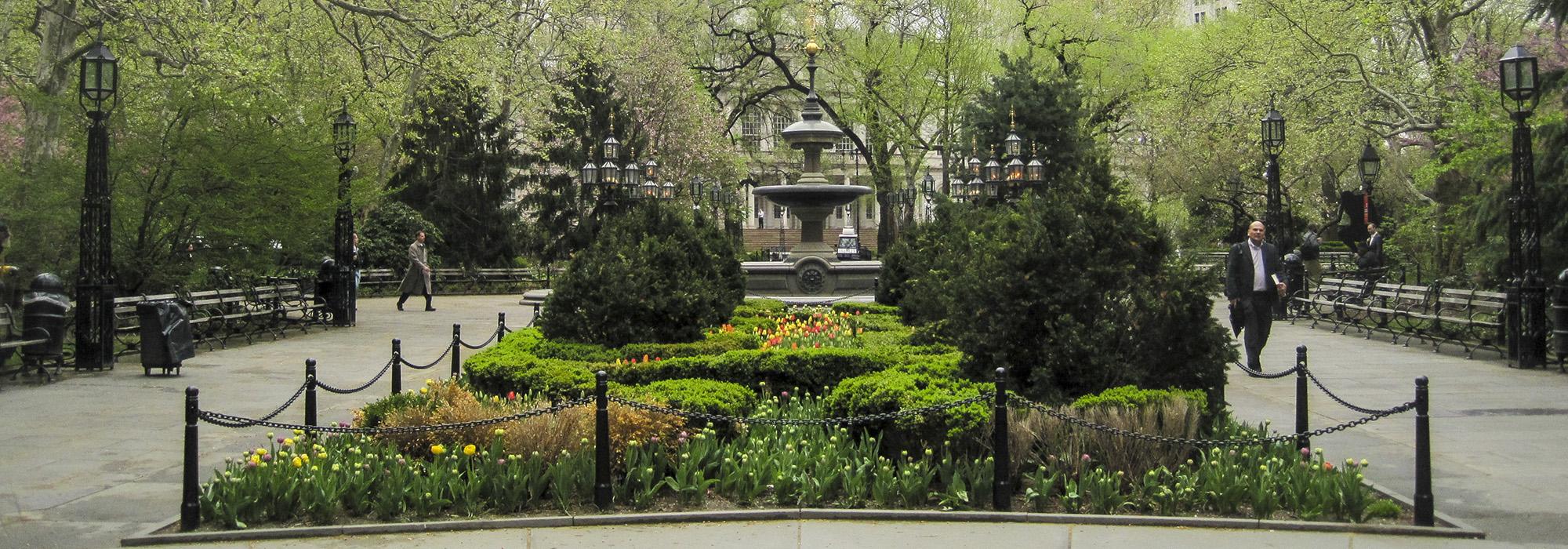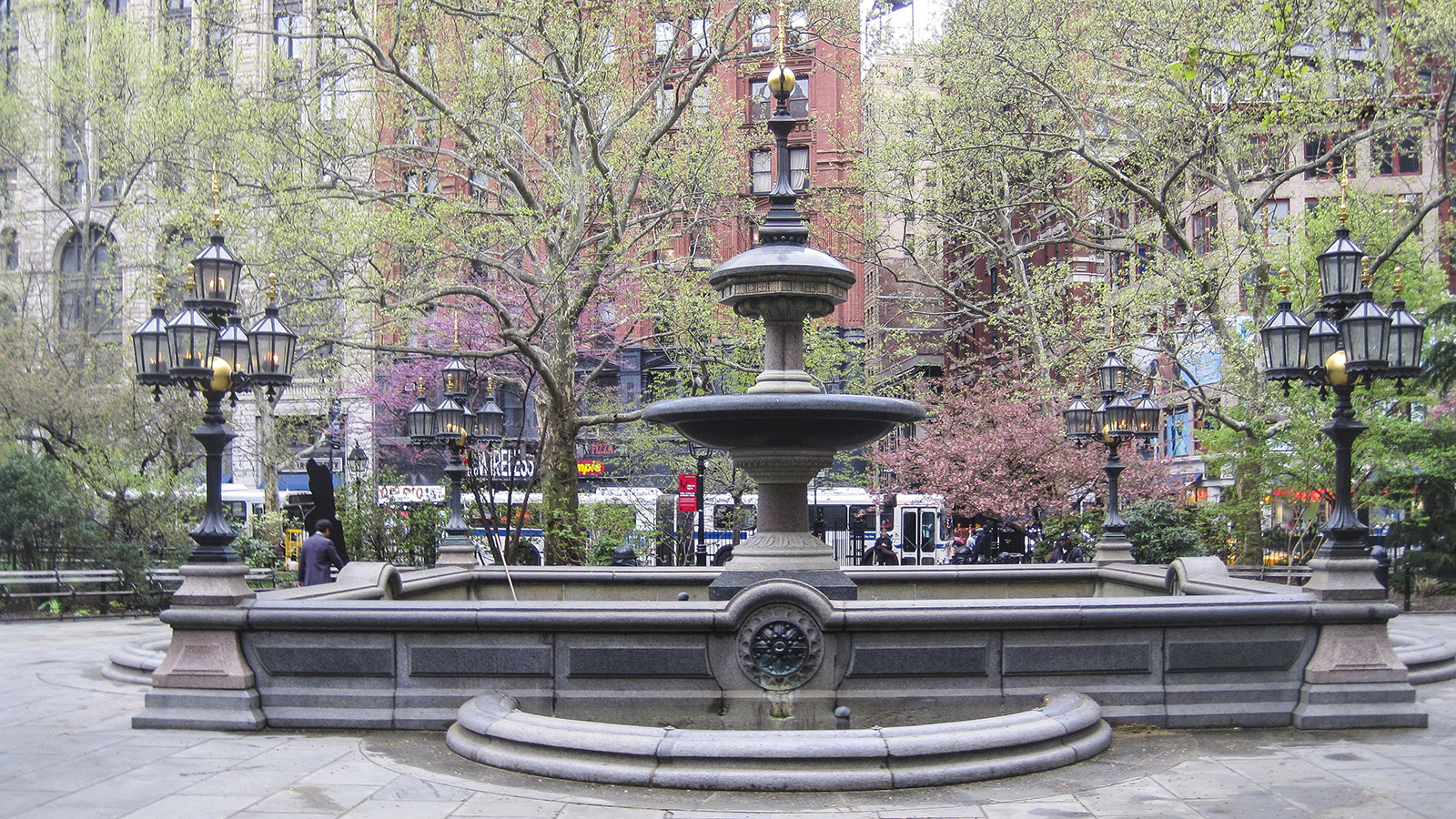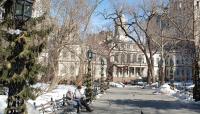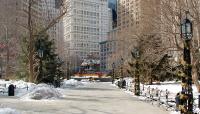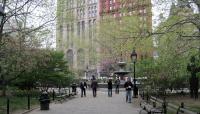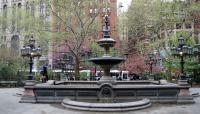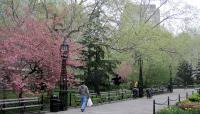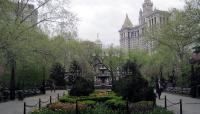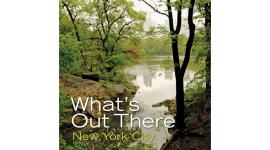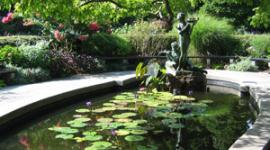Landscape Information
Both the seat of city government and an important civic space, City Hall Park occupies a triangular 8.8-acre site in Lower Manhattan. The site has been in continuous use since the City’s inception, and was an informal commons in the Colonial era. In 1802 the site was selected for the new City Hall designed by John McComb and Frances Magnin, the land developed into a formal park. McComb designed an iron fence with marble piers topped by lamps for the park’s perimeter in 1820. The Croton Fountain was added to the southern end of the park in 1842. It was replaced by a design by Jacob Wrey Mould in 1871, which was installed in front of City Hall after the southern end of the site was sold for use as a Federal Post Office.
In 1939, under Robert Moses, a long standing preservation battle concluded with the demolition of the Post Office. The building’s demolition reopened the historical viewshed to St. Paul’s Chapel, which allowed Gilmore Clarke to redesign the park with a long axial path oriented along this primary sightline. A modern Croton Fountain by M. Paul Friedberg was added at the southern tip of the park in 1984. In 1999 the park was renovated in a historicist style, removing Friedberg’s fountain, reinstating a copy of Mould’s fountain, and adding a reproduction of McComb’s boundary fence. This approach served as a model for other city parks.



